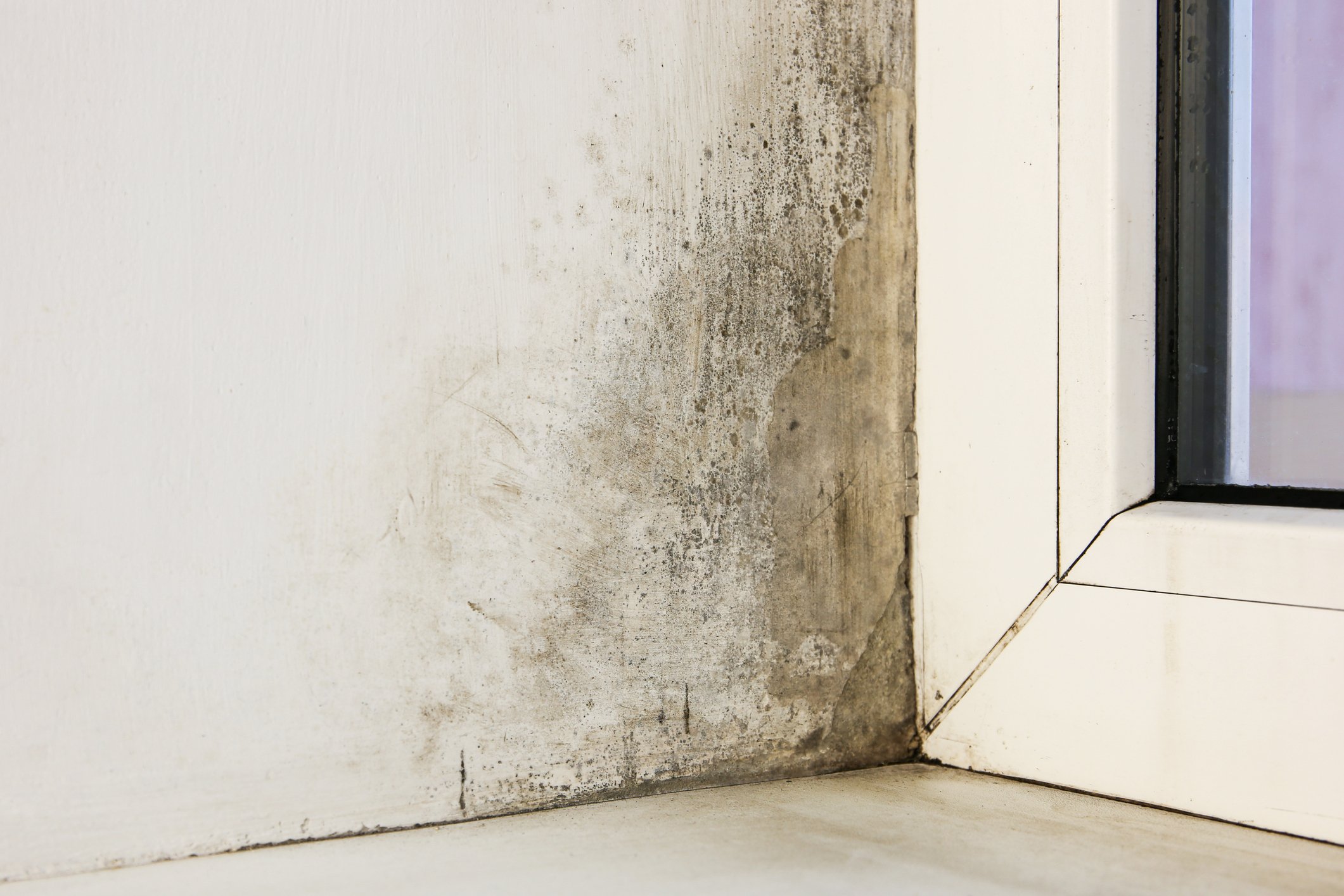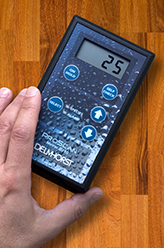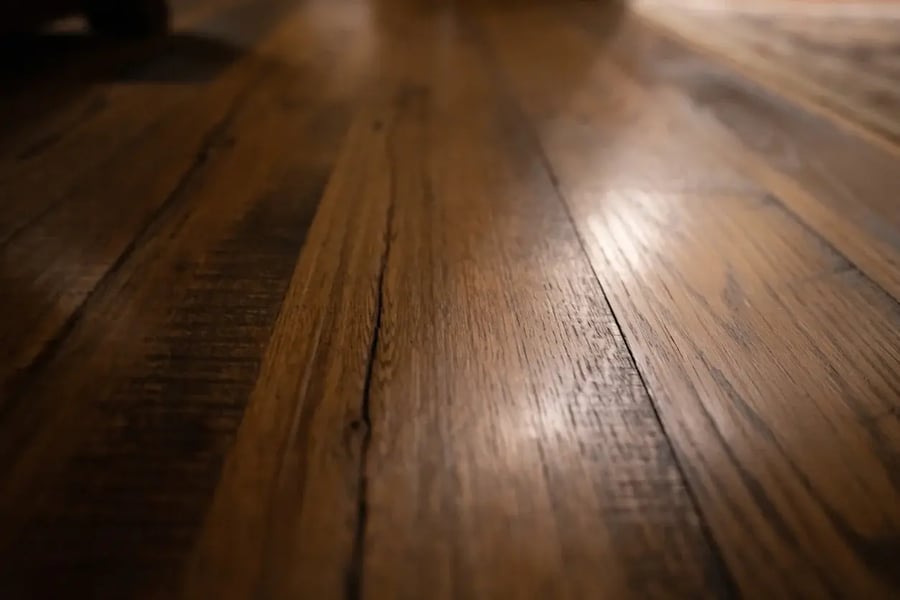Pin or Pinless Moisture Meters: Choosing the Right Meter for the Job

Moisture-related issues are a leading cause of property damage, with an astonishing 24% of property claims attributed to water damage. Whether you're a water damage restoration technician, a mold remediation specialist, an IAQ expert, or a building/home inspector, you know that having the right tools is essential to your success.
That's why pin and pinless moisture meters and thermo-hygrometers are the most important tools for assessing building integrity, detecting hidden moisture, and preventing mold, mildew, and bacteria growth. In this article, we'll explore the differences between pin and pinless moisture meters, and how they can help you do your job more effectively. If you're looking to take your moisture assessment game to the next level, read on!
How Do Pinless Moisture Meters Work?
Pinless moisture meters use radio frequency and impedance technology to detect the presence of moisture within a material. The sensor pad on the meter must fully touch the material being tested to obtain an accurate reading. The meter sends and receives a low-frequency signal and then calculates and displays the difference between the two signals as an indication of the moisture present in the material. This type of meter is particularly useful for obtaining relative moisture level readings (wet/dry) on building materials that are flat and have a wider surface area.
Understanding Pin Moisture Meters
Pin moisture meters measure the electrical conductivity in the wood or hygroscopic material. To determine the moisture content, the user inserts two electrode pins into the material and measures the resistance between them. This produces a %MC reading that users can compare to calibrated scales, making wet/dry comparisons easy. The same method applies to drywall and other hygroscopic building materials, providing reliable and repeatable readings.
Choosing the Right Moisture Meter for the Job
Experts in the industry recommend using pin and pinless moisture meters to achieve the most thorough detection and assessment of moisture levels. By using both types of meters, you can obtain the most precise and efficient results. When selecting a moisture meter, consider the following factors:
Application and Material Type: The type of material you want to measure moisture in will determine the most appropriate meter for the task. Manufacturers calibrate different meters to work best with specific materials such as wood, concrete, and drywall, ensuring that users get the most accurate readings possible. It's important to choose the right meter for your material to ensure optimal performance.
Measurement Depth Requirements: A pin moisture meter with optional electrode lengths is a good option if you need to measure moisture at different depths in a material. The pinless moisture meter, however, could be more convenient to quickly locate high moisture areas.
Surface Sensitivity: In situations where surface damage is not acceptable, such as finished floors, walls, or delicate materials, a pinless meter is the preferred option because of its non-invasive nature.
Job Site Conditions: When selecting a moisture meter, consider the environment and accessibility of the testing area. Pinless meters may be easier to use in confined spaces, while pin moisture meters are ideal for open, rugged job site conditions.
Accuracy and Precision: Evaluate the required level of precision and accuracy for your application. Pin meters provide high accuracy, especially for wood and porous materials, while pinless meters are ideal for general moisture screening or surface measurements.
Budget and Cost Considerations: Choosing the right moisture meter requires budget planning and prioritizing key features so that you make an informed decision. Both pin and pinless options are available at varying prices and with different capabilities.
Integrating Moisture Meters
Professionals dealing with moisture management should consider a combined approach, using pin and pinless meters. Pinless meters provide initial screening of large areas, while pin meters offer targeted and precise measurements. By combining data from both meters, professionals can make informed decisions about effective moisture management strategies. Calibration of both meter types is essential, and cross-referencing readings can validate and verify moisture measurements.
Moisture Meter Spotlight: ProScan
Experience the convenience of pinless moisture detection with Delmhorst’s ProScan moisture meter. Fast, accurate, and non-invasive, this handheld meter pinpoints moisture hot spots quickly and accurately. Its compact and lightweight design makes it easy to handle, while the digital display is easy to read.
Powered by a 9-volt battery and calibrated to ensure accuracy, your measurements are always accurate. You can also set adjustable alarm alerts to notify you when the pre-set moisture level is reached, giving you peace of mind.
The ProScan pinless moisture meter uses advanced RF technology to scan wood and other building materials with ease. The hold function makes readings in hard-to-reach places a breeze. ProScan can check a variety of wood species with its built-in species corrections for woods from .30 to .80 SG.
This pinless meter is a smart choice for any woodworking professional. It measures %MC between 5% and 30%. The rugged, one-piece sensor allows the meter to measure 3/4" deep without damaging the sample. The Delmhorst ProScan moisture meter will save you time and money, helping you prevent future moisture problems.
Contact Delmhorst’s specialists today to learn how our pin and pinless moisture meters can help you stay ahead of the game!
Subscribe to Our Blog
Post Related

Ideal Jobs for Pinless Moisture Meters

